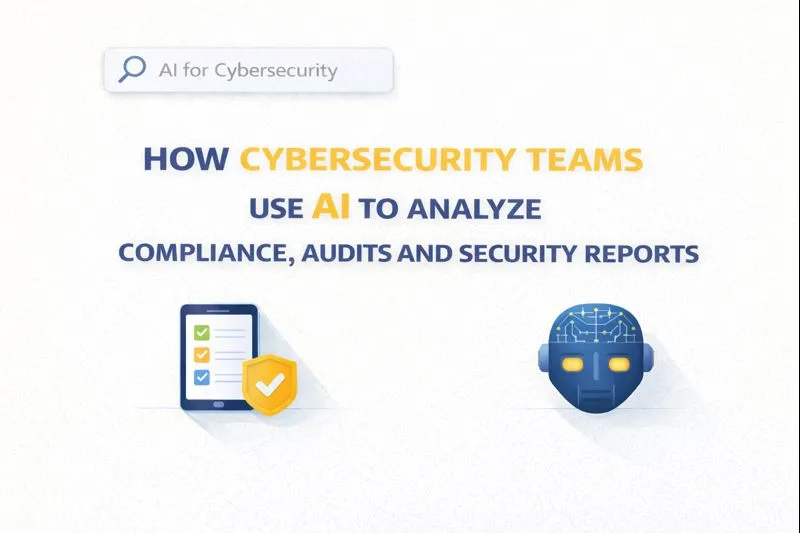Understanding the True Meaning of Growth Hacking
TL;DR
The Evolution of Growth Hacking: From Startup Scraps to Strategic Imperative
Okay, so growth hacking – it's more than just a buzzword, right? It's had quite the journey. I remember when it was all about startups trying to make a splash without spending a fortune. Things have changed a lot since then.
Growth hacking started as a scrappy way for startups to find customers without breaking the bank. Sean Ellis, who, let's be honest, kinda started it all, coined the term back in 2010. Ellis - his main focus was on finding cost-effective ways to grow quickly. It was a reaction to traditional marketing, which often didn't work for those early-stage businesses.
It's all about experimentation and using data to make smart decisions.
Think of it like this:
Startups needed a different approach. They couldn't afford big ad campaigns, so they had to get creative. It was about finding those hidden levers that could unlock rapid growth.
Rapid experimentation was key. Growth hackers would try a bunch of different things to see what stuck. If something didn't work, they'd move on to the next idea.
Data drove everything. It wasn't just about gut feelings; it was about looking at the numbers and figuring out what was actually working.
So, how did this work in practice? Well, we'll get into some examples of early growth hacking tactics next. Things like referral programs and clever integrations with existing platforms.
Early Referral Programs: Think of Dropbox's classic referral program. They offered free extra storage space to both the referrer and the referred user. This simple, mutually beneficial incentive created a viral loop that fueled massive user acquisition. Another example is Airbnb's early referral system, which gave credits to new users and discounts to existing users who invited friends, effectively turning their users into marketers.
Clever Platform Integrations: Hotmail famously added a simple line at the bottom of every outgoing email: "P.S. I love you. Get your free email at Hotmail." This turned every email sent by a Hotmail user into an advertisement, leveraging an existing platform (email) for viral growth. Another example is how early social media platforms integrated with other services, allowing users to share their activity on one platform to another, cross-pollinating user bases.
Defining Growth Hacking: Key Principles and Practices
Growth hacking… it's not just about magically finding the golden ticket, is it? It's more like figuring out the why behind the what—digging into the data to see what makes folks tick. It's kinda like being a detective, but instead of solving crimes, you're solving growth puzzles.
At its core, growth hacking is all about experimentation. You're constantly testing different ideas to see what works, and more importantly, what doesn't.
a/b testing is a classic tool. You try out two versions of something—say, a landing page—to see which one performs better. For example, a healthcare company might test different layouts for their appointment booking page to see which one leads to more bookings.
Multivariate testing takes it a step further, testing multiple variables at once. Think of a retail business tweaking everything from button colors to ad copy to find the perfect combo.
Don't forget user surveys! They're a goldmine for understanding user behavior and preferences. Imagine a fintech startup using surveys to understand why users are dropping off during the onboarding process.
It's not just about throwing stuff at the wall; it's about learning from what sticks.
Growth hacking isn't about hunches; it's about data. You gotta collect it, analyze it, and use it to make smart decisions.
Start by gathering data on customer behavior. Where are people clicking? What are they ignoring?
Then, dive into marketing campaign data. Which ads are bringing in the most qualified leads?
Don't forget product usage data. Which features are people using the most? Where are they getting stuck?
All this data helps you spot opportunities for growth. Like, maybe you notice that a lot of users are abandoning their shopping carts. You could then experiment with different checkout flows to see if you can boost conversions.
So, what does all this practically look like? Well, let's say you're running an e-commerce site. You could use a/b testing to try out different product descriptions. The winner is the one that leads to more sales, right? It's all about those incremental wins.
Now that we've got a handle on experimentation and data, let's talk about how teams come together to make this magic happen.
Building the Growth Engine: Team Collaboration and Structure
Growth hacking isn't a one-person show. It takes a team, and how that team is structured can make or break your efforts. It's about getting the right people in the room and making sure they're all rowing in the same direction.
Cross-functional Teams: The best growth teams are usually cross-functional. This means you've got folks from marketing, product, engineering, and data all working together. They bring different perspectives and skills, which is crucial for identifying and executing on growth opportunities. Imagine a product manager, a data analyst, and a marketer huddled together to brainstorm ways to improve user activation.
Dedicated Growth Teams: Some companies create dedicated growth teams, often reporting directly to a senior leader or even the ceo. This gives them the autonomy and focus needed to really experiment and move fast. They're not bogged down by the day-to-day operations of a specific department.
Empowerment and Autonomy: Whatever the structure, it's vital to empower the team. Give them the resources, the data access, and the freedom to experiment. They need to feel like they can try new things without a ton of red tape. This fosters that innovative, "fail fast" mentality that's so important.
Growth Hacking vs. Traditional Marketing: What's the Difference?
Okay, so, growth hacking vs. traditional marketing... Is it just different words for the same thing? Not really, but it's easy to see why people get them mixed up.
Growth hacking is all about that mindset—being scrappy, experimental, and always looking for the quickest win. Traditional marketing, it's more like following a well-worn path, and, you know, hoping for the best.
Growth hackers are like, obsessed with rapid experimentation. Think of them as scientists, but instead of curing diseases, their trying out new tactics like referral programs or clever api integrations to get more users.
Traditional marketing, on the other hand, is more about established strategies. They might launch a big ad campaign or run a long-term content strategy, hoping it'll pay off down the road.
Growth hacking is all about quick wins and scalable solutions. Like, can we double our user base in the next month? Traditional marketing is more about long-term brand building.
Imagine a retail company. A growth hacker might try a bunch of different things, like offering discounts to customers who share their purchases on social media, while a traditional marketer focuses on tv ads.
So, where does tech come into play with all this? That's what we're diving into next.
Growth Hacking in the Modern Landscape: B2B SaaS and Cybersecurity
Growth hacking in b2b SaaS and cybersecurity? Sounds like a match made in... well, not heaven, but definitely a lucrative partnership. It's all about finding those overlooked areas and turning them into growth engines.
Product-led growth is where it's at. The product itself becomes the main driver of new users and keeps them hooked. Think about it: if your software is so intuitive, people start using it without needing a sales pitch, that's a win.
Freemium and free trials are your bait. Get 'em in the door with a taste of what you offer, then upsell them to the good stuff.
Make sure that onboarding is smooth. Nobody wants to wrestle with a complicated setup, right? show them the value quick.
Referrals, good old word-of-mouth marketing, on steroids. Give people incentives to spread the love.
Cybersecurity's a whole different beast, but growth hacking still applies. It's about content, mostly.
Content marketing is key. Educate your audience, become a thought leader, and watch the leads roll in.
pSEO rocks. Target those long-tail keywords like "how to prevent ransomware at small biz" and you'll get qualified traffic that converts.
Programmatic seo? Automate that content creation and optimization, then scale that thing up. It's a force multiplier, really.
So, how do these strategies actually look? Let's dive into some practical examples.
Product-Led Growth in B2B SaaS: Slack is a prime example. They offer a free tier that's incredibly functional, allowing teams to experience its value firsthand. As teams grow and need more features, the upgrade path is seamless and often driven by user demand within the organization.
Freemium for Cybersecurity: Many cybersecurity tools offer a free version with basic protection. For instance, a password manager might offer a free tier for a limited number of passwords, encouraging users to upgrade for unlimited storage and advanced features as they realize the value.
Content Marketing & pSEO for Cybersecurity: A cybersecurity firm might create in-depth guides on "how to secure your home network" or "understanding phishing scams." By optimizing these articles for relevant long-tail keywords, they attract individuals and small businesses actively seeking solutions, positioning themselves as experts and generating qualified leads.
Programmatic SEO for SaaS: A company offering project management software could use programmatic seo to generate thousands of unique landing pages for specific use cases or industries, like "project management software for construction companies" or "best task management tools for remote teams." This scales their organic reach significantly.
Debunking Myths and Avoiding Pitfalls in Growth Hacking
Growth hacking: is it really all sunshine and roses? Nah, there's some junk out there. But, don't let the myths scare ya off!
Growth hacking isn't a magic wand. It's work.
It ain't just about snagging new peeps either; keeping em' round matters.
And it sure as heck shouldn't be unethical, like, c'mon.
Next, let's look at what to avoid, so you don't fall flat on your face.
Common Pitfalls to Sidestep in Growth Hacking
While growth hacking is powerful, it's easy to stumble if you're not careful. Here are some common traps to avoid:
Chasing Vanity Metrics: It's tempting to focus on metrics like website traffic or social media likes, but these don't always translate to actual business growth. Instead, focus on metrics that directly impact your core business goals, like customer acquisition cost (CAC) or customer lifetime value (CLTV).
Ignoring Retention: As mentioned, just getting new users isn't enough. If they don't stick around, your growth efforts are wasted.
Actionable Strategies for Retention:
Personalized Onboarding: Tailor the initial user experience based on their stated goals or how they signed up.
Proactive Customer Support: Reach out to users who seem stuck or disengaged.
Loyalty Programs: Reward long-term customers for their continued business.
Regular Value Delivery: Consistently provide new features, content, or updates that keep users engaged and demonstrate ongoing value. For example, a SaaS company might release monthly feature updates or host regular webinars for its users.
Lack of Clear Goals: Without defined objectives, your experiments will be directionless. Ensure every growth initiative has a specific, measurable, achievable, relevant, and time-bound (SMART) goal.
Not Iterating Based on Data: The whole point of growth hacking is to learn and adapt. If you're not analyzing your experiment results and using them to inform your next steps, you're missing out on the core benefit.
Ethical Lapses: Some tactics might seem like quick wins but can damage your brand reputation in the long run. Always prioritize ethical practices and transparency.
Measuring Success: Key Metrics and Analytics for Growth Hacking
Alright, so you've been growth hacking... now what? Gotta figure out if it's actually working, right?
First up, nail down your North Star Metric. What single metric really shows that your product's kickin' butt? Forget vanity metrics; think deeply. Like, for a food delivery app, it ain't just downloads, it's probably orders per user per month.
Then, get friendly with AARRR - Acquisition, Activation, Retention, Referral, Revenue. It's a pirate-y way to look at your funnel. Are people bailing after signup? Maybe your onboarding sucks. Are they not sticking around after the first month? Something's gotta change.
Analytics tools aren't optional. Google Analytics is cool, but stuff like Mixpanel or Amplitude lets you really drill down into user behavior. What are people doing inside your app? Find the patterns!
- Example using Mixpanel/Amplitude: Let's say you're running a task management app. You notice in Mixpanel that a significant number of users who create tasks never actually mark them as complete. This is a key insight into user behavior. You could then hypothesize that users aren't seeing the value of task completion or that the process is cumbersome. Your next growth experiment might involve redesigning the "task completion" flow, adding gamified elements to encourage completion, or sending targeted in-app messages to users who frequently create tasks but rarely finish them. This level of granular analysis helps identify specific friction points and opportunities for improvement.
So, with all that data, you can track progress, see what's up, and adjust, right? Time to get to work.





